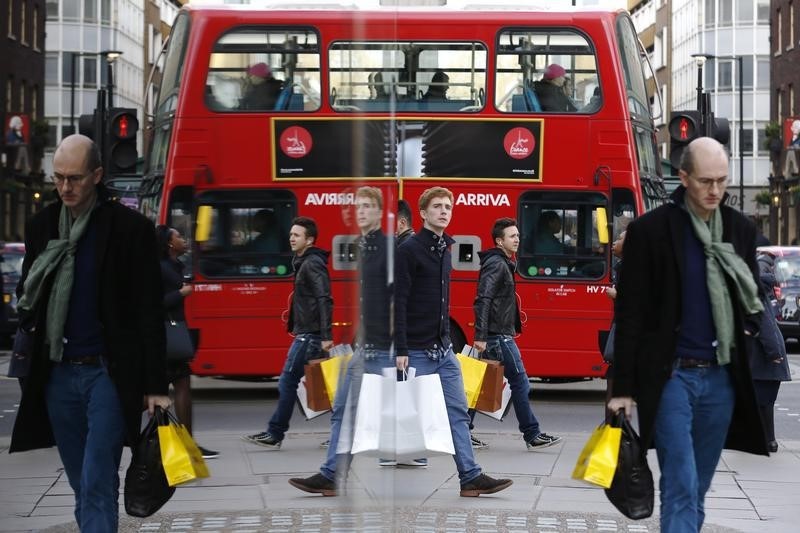LONDON, June 14 (Reuters) - British inflation held steady in May against expectations for a small increase, as continued falls in clothing prices offset pressure from fuel prices, official data showed on Tuesday.
Consumer prices rose 0.3 percent compared with a year ago, the Office for National Statistics said, and slightly below economists' expectation for a 0.4 percent annual rise.
Overall, the figures underlined the lack of inflationary pressure in Britain's economy, with inflation holding at 0.3 percent throughout 2016 with the exception of March.
British inflation has been below the Bank of England's 2 percent target for more than two years and last year it was zero, the lowest since comparable records began in 1950.
Still, BoE policymakers are unlikely to put too weight on the inflation data when they meet this week, given the uncertainty created by next week's referendum on Britain's European Union membership.
In May the Bank of England forecast inflation would stay below 1 percent until almost the end of the year and to undershoot its target until 2018, due to the global slump in oil prices, the effect of past rises in sterling and lacklustre wage growth.
Clothing and footwear prices fell 0.4 percent on the year, with British retailers competing hard for custom. Food and beverage prices continued to weigh on inflation.
There were signs that the fall in oil prices is gradually starting to filter out from the annual inflation rate. Prices paid by factories for materials and fuel fell 3.9 percent, the smallest decline since May 2014.
British drivers also paid more in fuel prices on the month, which contributed to the upward pressure on overall inflation exerted by the transport sector.
North Sea oil prices rose around 3 percent in dollar terms in May and rallied further in June, to hit an 8-month high last week.
But a lack of underlying domestic price pressures, as well as fears that uncertain global demand and jittery stock markets might sap the strength of Britain's moderate recovery, mean few economists expect the BoE to raise rates before early next year.
Many in financial markets think it could take much longer, and see a decent chance that the BoE could instead be forced to cut rates below the record-low 0.5 percent where they have languished for almost seven years, especially if the country votes to leave the EU in next week's referendum.
But the central bank has said it expects sterling to fall and inflation to lurch higher after a vote for Brexit, and that it is hard to say in advance which would be the right direction to move rates.
An ONS measure of core consumer price inflation -- which strips out changes in the price of energy, food, alcohol and tobacco -- held steady at 1.2 percent, compared with economists' expectations for it to rise slightly to 1.3 percent.
Expectations among people in Britain for inflation over the coming year slipped in May to 1.5 percent according to a YouGov survey, but a separate BoE poll showed them rising to 2.0 percent.
Factory gate prices fell 0.7 percent on the year compared with forecasts of a 0.5 percent annual drop.
The ONS also launched a single official measure of house prices, replacing separate data from the ONS and Land Registry.
This showed house prices increased by 8.2 percent in annual terms across the United Kingdom as a whole, compared with an 8.5 percent rise in March.
Prices in London alone rose 14.5 percent compared with a year ago. A shortage in housing supply is expected to keep the market under pressure, though in the short-term the referendum and a tax rise on purchases of property to rent out has hit demand. OLUSECON Reuters US Online Report Economy 20160614T084637+0000
